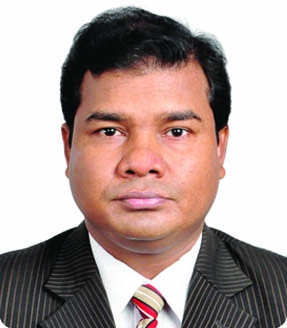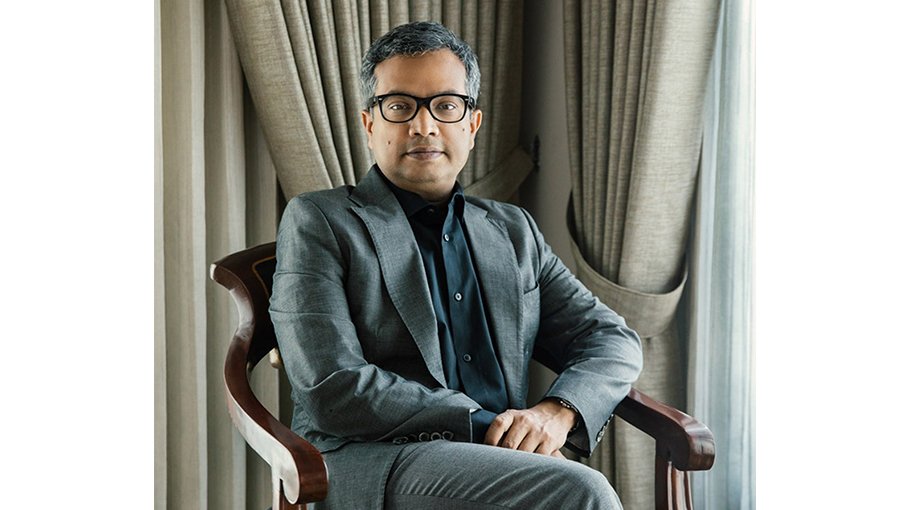Manmade fibre to play key role in reaching Bangladesh’s $100b export target by 2030
BGMEA Director &Team Group MD Abdullah Hil Rakib says in an interview

It’s manmade fiber that will play a pivotal role in the journey of reaching our target of US$ 100 billion export by 2030, said Abdullah Hil Rakib, Managing Director of Team Group and also a Director of Bangladesh Garment Manufacturers and Exporters Association (BGMEA) in an exclusive interview with Bangladesh Post.
He said that Bangladesh exploited the opportunity of exploring cotton-based products. More than 70% of the country's total apparel export is cotton-made items. In the total global apparel consumption, share of non-cotton or man-made fibre (MMF) items is around 75%, while the share of cotton-made items is 25%. Whereas only 26% of Bangladesh's readymade garment (RMG) export is non-cotton items. So, Bangladesh has a huge opportunity to enhance its export in the non-cotton or man-made apparel items.
"I feel ultimately the opportunity of polyester is much higher if we think of China plus one opportunity. As you know that China does not work that much with cotton, rather they mainly produce polyester-based apparel so, if we can catch at least 5 to 7 percent of the US$178 billion apparel export of China, I think this will play a significant role in our export growth", Rakib added.
Abdullah Hil Rakib, a prominent apparel entrepreneur of the country and the Kotler Entrepreneur of the Year 2023 winner replies to a set of queries made by Bangladesh Post that has covered the whole gamut of national and international scenario of Bangladesh’s RMG industry.
The excerpts of his interview are as bellow:
Bangladesh Post: In recent times Bangladesh’s RMG export to its main markets such as to the US and the EU has dropped alarmingly.As an industry leader how do you observe this? What could be the consequences of this steep decline?
Abdullah Hil Rakib: The ongoing inflation worldwide or the direct-indirect impacts of Russia-Ukraine war have disrupted the global supply chain and resulted in price hike of necessary products. As a matter of the fact costs of the essentials such as food, medicine etc have gone up. This ultimately contributed to the increase of living cost of people in the Western world. So, they aresetting prioritiesin purchasing products, avoiding to buy new clothesif it’s not urgent.
If you look at the European economy, you see Germany has already been gone through recession, Amsterdam or Scandinavia is also not doing well; so people have got their worries. Purchasing capacity is a factor. The cost of oil has increased manifold; so ultimately the cost of living has increased. As people cannot sacrifice their living standard, eventually it affected their purchasing of clothes since fashion is not mandatory to maintain.
Bangladesh is known for doing volume-driven apparel production. But currently buyers have reduced their orders by 20, 30 or even 50 percent because their inventories of last year have not finished yet.
I feel that we are rather blessed because some orders from countries like Myanmar have shifted to us due to geo-political issues; whereas the situation of other apparel exporting countries is even worse. Still we can run our factories for at least eight hours whereas in some other apparel producing countries half of their factories are shutting down.
Bangladesh Post: As a specialist in outwear manufacturing, how could you assess the global market, demand and stake of Bangladesh in term of the outwear production?
Abdullah Hil Rakib: Bangladesh exported apparel worth US$ 46.99 billion in the last fiscal year. But interestingly according to an estimation, if we can ensure optimum use of our capacity, with the current infrastructure of our industry US$ 70 billion export is possible.
Bangladesh exploited the opportunity of exploring cotton-based products. More than 70% of the country's total apparel export is cotton-made items. In the total global apparel consumption, share of non-cotton or man-made fibre (MMF) items is around 75%, while the share of cotton-made items is 25%. Whereas only 26% of Bangladesh's readymade garment (RMG) export is non-cotton items. So, Bangladesh has a huge opportunity to enhance its export in the non-cotton or man-made apparel items.
I feel ultimately the opportunity of polyester is much higher if we think of China plus one opportunity. As you know that China does not work that much with cotton, rather they mainly produce polyester-based apparel. So, if we can catch at least 5 to 7 percent of the US$178 billion apparel export of China, I think this will play a significant role in our export growth. It’s the manmade fiber that can play the pivotal role in our journey of reaching US$ 100 billion export target by 2030.
Definitely proper technology, training, investment have to be in place. We are at present struggling from the scarcity of skilled manpower. You know that the shortage of skilled manpower is acute for the outwear manufacturing.
So, it’s a challenge, but at the same time it is an opportunity. We are regularly arranging trainingsfor workers at our outwear factory. Some of them are later moving to other factories and ultimately the industry is being benefited. And this is a cause of our satisfaction that we are contributing to the industry.
Bangladesh Post: What about the latest focus in term of innovation and how far Bangladesh is aligned with that?
Abdullah Hil Rakib: The world is now demanding traceability – the details about from where you are purchasing raw materials, social conditions of your factories, workers safety etc. So the traceability means whether your factory is environment-friendly or how far you are able to create impacts at your factories and around its adjacent areas; at the same time how good is the governance at your factory, what about occupational health and safety of the workers, how much you are working for the skill development of your workers.
So now what we need is to maintain accurate data at our factories and establish transparent disclosure of the data.If we cannot improve our management efficiency, we will fail to uphold ultimate sustainability because only the efficient management will be able to ensure an efficient and transparent production process.
The young generation between the age group of 20 to 30 years is much more conscious in their purchasing. They seek the product data, the details under which condition a product is produced. The EU Commission in its proposed sustainability strategies for the fashion industry has prescribed digital passport for a product. That means by scanning the digital passport consumers could know all the data of apparel products. The EU Commission told that they are going to make the digital passport mandatory by 2026.
customers are themselves not ready yet to comply with the digital product passports, but this will come definitely if not within 2026 by 2030. So, we as the manufacturers have to be ready for adopting these changes.
Bangladesh Post: Please brief us about the green revolution in the RMG industry.
Abdullah Hil Rakib: Well, you already know that a revolution has happened in Bangladesh in the growth of green factories. Our entrepreneurs have invested heavily in green garments. There are over 200 green garment factories in the country LEED certified by the United States Green Building Council (USGBC). About 500 more garment factories are in the pipeline to get the LEED certification. May be some of them have done it to comply with customers’ demand, some have done by their own choice for the betterment of their workers and to show their commitment to sustainability.
I think the mindset is very important here. If you build a green factory you are contributing to make the world a better place to live in for your future generation.
Bangladesh Post: Could you please brief us about the ventures of Team Group, its turnover and growth?As we know that your group cherishes an ideology which is ‘TEAM philosophy’, how this played a role in attaining your set mission and vision?
Abdullah Hil Rakib: We had a target of achieving 1-billion-dollar turnover by 2025. But due to the current global situation, world’s recession, the national election ahead etc. customers are a bit confused in placing orders.So, we are at present lagging behind by 11 percent in achieving our set target for the current year. It’s not only for me, the situation is same for all factories.Some of the factories are currently even running production upto 20 to 30 percent under capacity. Now we are cherishing a dream to reach the target of 1 billion by 2028. Right now,our turnover from the apparel manufacturing units is about US$ 280 million and from appareltrading it’s about US$ 375 million, the rest are from non-RMG. Our goal is to add US$ 200 million more turnover from the manufacturing. For this, we are constantly working for improving skills or efficiencies. We hope to create employment for about two thousand more people by the year 2026 and then our total employment will be around 30,000.
I believe that the very word ‘I’ make you alone but when you say ‘We” it creates power. You see we have named our company '‘Team Group’ and our tagline is ‘Together we achieve more’. If you can feel by your mind that we are one family and if you are able to make feel your employees that this is their home,not workplace;your strength will be unlimited. We were able to give every employee here that confidence and comfort. We even share our profits among them.
I believe from the core of my heart that we are one family and, in our journey, so far ‘the team philosophy’ has worked wonder.



